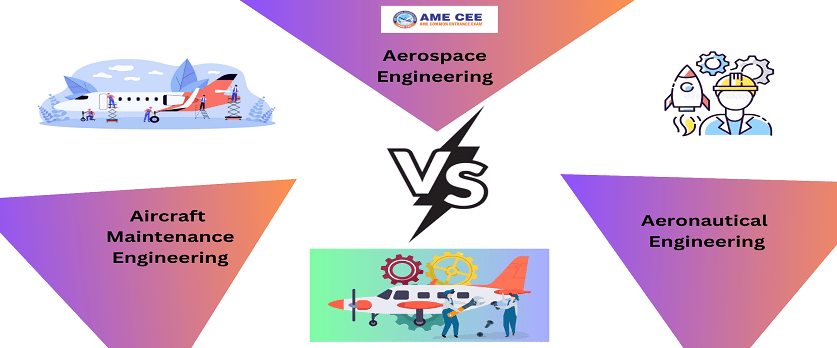Choosing between Aircraft Maintenance Engineering (AME), Aerospace Engineering, and Aeronautical Engineering is a pivotal decision for aspiring engineers. This article provides an in-depth comparison of these fields, explores their unique benefits, and addresses seven frequently asked questions (FAQs) to guide prospective students.
Understanding AME
Aircraft Maintenance Engineering Overview
Roles and responsibilities of AME professionals.
Importance of AME in ensuring aircraft safety.
Accreditation and licensing requirements.
Aerospace Engineering
Aerospace Engineering Overview
Overview of Aerospace Engineering and its applications.
Design and development of aircraft and spacecraft.
Key educational and skill requirements.
Aeronautical Engineering
Aeronautical Engineering Overview
A focus on designing and constructing aircraft.
Educational prerequisites and potential career paths.
Career Prospects
AME Career Opportunities
Job opportunities in aviation, emphasizing maintenance.
Global demand for skilled AME professionals.
Potential salary ranges and career growth.
Aerospace Engineering Career Opportunities
Versatility in working on aircraft and spacecraft.
Opportunities in the aerospace industry and research.
Potential job roles and growth prospects.
Aeronautical Engineering Career Opportunities
Focus on aircraft design and manufacturing.
Career paths in aviation and related industries.
Overview of potential job roles and earning potentials.
Benefits of Each Field
Job stability and satisfaction in AME.
Cutting-edge innovation and exploration in Aerospace Engineering.
Design and development opportunities in Aeronautical Engineering.
Frequently Asked Questions About AME vs Aerospace Engineering vs Aeronautical Engineering
Q1. What is the primary distinction between AME, Aerospace Engineering, and Aeronautical Engineering?
Answer: AME focuses on the maintenance and safety of aircraft, while Aerospace Engineering and Aeronautical Engineering involve designing and manufacturing aircraft and spacecraft.
Q2. What are the key responsibilities of an AME professional?
Answer: AME professionals are responsible for ensuring the proper maintenance, repair, and safety of aircraft. They conduct inspections, troubleshoot issues, and certify aircraft for flight.
Q3. How does Aerospace Engineering differ from Aeronautical Engineering?
Answer: Aerospace Engineering includes the design and development of aircraft and spacecraft, whereas Aeronautical Engineering specifically focuses on designing and constructing aircraft.
Q4. What career opportunities are available in Aerospace Engineering?
Answer: Aerospace Engineering offers diverse opportunities, including working on aircraft, spacecraft, and in research and development. Careers can range from design and testing to project management.
Q5. Can Aeronautical Engineering graduates work in the aerospace industry?
Answer: Yes, Aeronautical Engineering graduates can work in the aerospace industry, especially in roles related to aircraft design, manufacturing, and testing.
Q6. How does AME contribute to aviation safety?
Answer: AME professionals play a critical role in aviation safety by ensuring that aircraft are properly maintained, meeting regulatory standards, and conducting thorough inspections.
Q7. What are the educational requirements for pursuing a career in Aerospace or Aeronautical Engineering?
Answer: Typically, a bachelor’s degree in Aerospace or Aeronautical Engineering is required. Additionally, gaining practical experience through internships or projects is valuable for career development.
To become an aircraft maintenance engineer you may could join AME engineering through AME COMMON ENTRANCE EXAM (AME CEE) this examination you may join AME engineering approved by DGCA, EASA or UGC.


